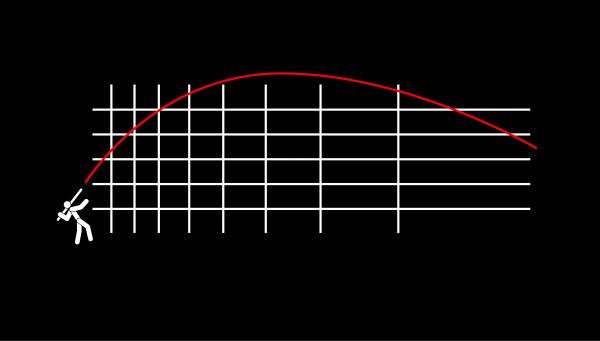Acoustics horns are everywhere around us. They are the natural amplification principle par excellence, and the most efficient. In a nutshell, a horn is a pipe with a section that varies progressively, which modifies the loudspeaker’s driver behaviour.
By showing resistance to the driver’s diaphragm displacement (so-called acoustic load), the horn creates a smooth transition between the high impedance of the driver diaphragm and the low impedance of the surrounding air which induces a better energy transfer. This effect is called impedance matching and is very common in electricity as well (source and load impedances are matched so as to transfer voltage, current, or power better, depending on the situation).
Horns can be conical, exponential, hyperbolic (many other shapes exist), and sometimes combine various profiles to get the required properties.
This phenomenon can be found in our daily life: the human throat and mouth are part of an acoustic horn (with variable geometry!).
Horns are very common in wind instruments – trumpet-like instruments date back to 4000BC and the principle was used a lot for sound recording in the nineteenth century. Invented by Scott de Martinville in 1857 the Phonautograph was the first sound recording device, and it obviously used a horn! Then came Thomas Edison with his phonograph, then the gramophone…

During the 20th century, horns became very common in pro audio systems. It allowed high pressure level despite small amplification capacity which was the norm at the time. During the fifties was launched the Voice of the Theatre series, made by Altec Lansing, that only used horn-loaded drivers.

Pikip products are horn-based so to reduce power consumption and increase autonomy.
A typical gain of +10dB SPL means a reduction by ten of power consumption! Moreover, horns limit driver diaphragm displacement, which reduces distortion and increases transducers’ lifespan.

Horns are often used for directivity control, that is to focus the sound energy on a particular area. It reduces noise pollution for the neighbours (outdoors), improves the acoustics (in a room), and it helps get a homogeneous reproduction for the audience (the sweet spot). Those horns are called constant directivity horns, and they work great in the medium and high-frequency range. Pikip speakers also include this technology.

What about the sound?
Because of their characteristics, horns are, for many Hi-Fi specialists, the best of the best. Rightly designed and built, they ensure clarity, dynamics, and fidelity in the sound reproduction: from the kick of the drum kit, the warmth of the saxophone vibratos to the guitar player’s fingers noise on the strings, every detail is there to enjoy!

PikiP's SOLUTION USING HORNS :
PikiPbooth >
PikiPstage >










